K-Prema – Internal Pipe Seal
The K-Prema Internal Sealing System is designed for the rehabilitation and repair of pipelines that have a diameter ranging from 500 to 4000mm. The K-Prema Liner End Seal prevents any debris from entering the gap between the liner and the host pipe and is available for pipes from 200mm to 1400mm in diameter.
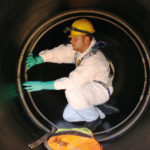
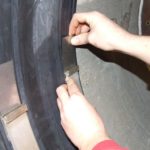
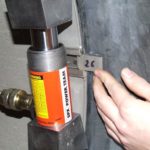
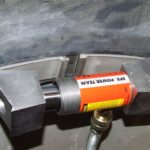
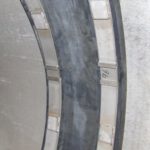
Manufactured to suit a range of drinking and sewage water, oil and air applications, the K-Prema range can be utilised on an array of pipe materials including concrete, steel, cast iron, PE, glassfibre and other materials. K-Prema is manufactured from a WRAS-approved material and will withstand an internal pressure of 20 bar.
- Manufactured from a WRAS-Approved material
- Easy to install & cost-effective
- No need for excavation
- High quality manufacture
- Watertight and durable
- Internal pipe seal: 500 to 4,000mm pipes
- Liner end seal: 200 to 1,400mm pipes
K-Prema is an efficient method of sealing pipes that are damaged due to corrosion, displaced joints, tree roots and ground movement or sealing the ends of liners to prevent debris entering the gap between the liner and host pipe.
- Simple installation – from as little as 30 minutes
- Cost effective solution
- No excavation required – helps reduce disruption and avoidance of lane rental charges
- Watertight rehabilitation and liner sealing for larger pipes
- Many applications
- Seal bands are available at 280mm, 330mm and 480mm widths, to suit various applications
- For use with many pipe materials, including; concrete, steel, cast iron and plastics
- Internal pressure rating of 20 bar (290psi)
Lining Best Practice
In order to prevent debris from entering the gap between the liner and the host pipe, it is best practice to seal the end of the liner. K-Prema liner end seals are ideal for this job and, unlike other possible methods of achieving a seal here, will withstand an internal pressure of up to 20 bar. K-Prema is therefore suitable for pipelines under pressure and those that will require a pressure test for other reasons. K-Prema liner end seals are available for 200mm to 1400mm diameter pipes.
High Quality Manufacturing
The system consists of an EPDM rubber sleeve and clamping bands made of high grade 304 stainless steel.
Durable under pressure
K-Prema has a maximum internal pressure rating of 20 bar (290psi) and an external pressure range of between 0.5-1 bar. Additional clamp bands can be installed across the width of the coupling to resist higher external pressures.
Tools Required
A special hydraulic ram and hand pump are required to carry out the installation. Please contact us for more information.
Preparation
The area around the pipe joint needs to be clean and free of any dirt and loose debris and all the voids should be filled. With concrete pipes, surface preparation would be advisable.
Installation
Ensure any Confined Space legislation or regulations are complied with.
- Lay the seal in the bottom of the pipe and position symmetrically across the point of repair, with the profiled side facing inwards. Place retaining bands in the rubber location grooves in the bottom half of the coupling.
- At each end of these retaining bands position a stainless steel shim between the rubber and the stainless band, with half the length projecting beyond the end of the band. These shims are to prevent the ends of the retaining bands pressing into the rubber and should be used.
- Locate the top halves of the retaining bands into the grooves in the rubber seal on top of the bottom bands. This will hold the hoops in position prior to expansion of the joints.
- Position the hydraulic ram between the lugs that are welded onto the ends of the retaining bands. The ram ends can be rotated to provide the correct dimension for fitting between the lugs. The hydraulic ram is then lightly pressurized to force the two ends apart.
- A spacer wedge of a suitable dimension should be placed in the gap created by this expansion. The pressure is released and the ram taken out. This should be repeated at all the junctions in the retaining bands.
- Each junction should now be re-tensioned with increased ram pressure. Replace the original spacer with a larger spacer. Select a spacer that has a slight interference fit and hammer it into position. Ensure any friction between the rubber and the retaining band is overcome and that the band seats fully against the seal, by tapping with a hammer. The ram pressure required for large concrete pipes is 300 to 400 Bar and can be measured using the gauge on the pump assembly.
- Repeat this process until all junctions have maximum sized spacers fitted and the seal is fully located.
Note: Return and re-check seal 24 hours after installation and re-expand if required due to relaxation of the rubber.

